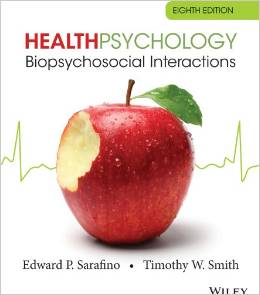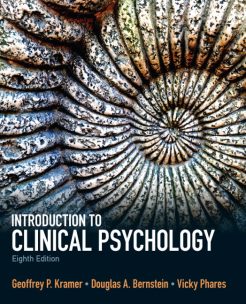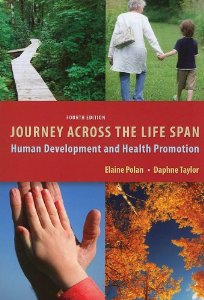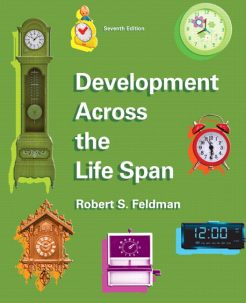Description
***THIS IS NOT THE ACTUAL BOOK. YOU ARE BUYING the Test Bank in e-version of the following book***
Title: Test Bank for Health Psychology Biopsychosocial Interactions 8th Edition Edward P Sarafino Download
Edition: 8th Edition
ISBN-10: 1118425200
ISBN-13: 978-1118425206
– The test bank is what most professors use an a reference when making exams for their students, which means there’s a very high chance that you will see a very similar, if not exact the exact, question in the test!
– The file is either in pdf, doc, rtf or zipped in the package and can easily be read on PCs and Macs.
– Delivery is INSTANT. You can download the files IMMEDIATELY once payment is done.
We also faced similar difficulities when we were students, and we understand how you feel.
But now, with the Test Bank for Health Psychology Biopsychosocial Interactions 8th Edition Edward P Sarafino Download, you will be able to
* Anticipate the type of the questions that will appear in your exam.
* Reduces the hassle and stress of your student life.
* Improve your studying and also get a better grade!
* Get prepared for examination questions.
* Can save you time and help you understand the material.
This is the quality of service we are providing and we hope to be your helper.
Delivery is in the next moment. Test Bank is accurate.
If you have any questions, or would like a receive a sample chapter before your purchase, please contact us at inquiry@testbankcorp.com
CHAPTER 1
AN OVERVIEW OF PSYCHOLOGY AND HEALTH
CHAPTER OUTLINE
I. What is Health?
A. Section Introduction
1. Common definitions of health focus on lack of:
a. objective signs of illness – e.g., high blood pressure
b. subjective symptoms of illness – e.g., pain or nausea
B. An Illness/Wellness Continuum
1. The concepts of health and sickness overlap
2. Antonovsky proposes an illness/wellness continuum with polar ends of death/illness/disability v. optimal wellness
a. need to change focus from what makes people sick to what keeps people well
3. Health = the positive state of physical, mental and social well-being that varies over time along a continuum
C. Illness Today and in the Past
1. In industrialized nations, people live longer than in past and suffer from different patterns of illnesses
2. Until this century, people in North America died from mainly dietary and infectious diseases
a. dietary illnesses: illnesses resulting from malnutrition such as beriberi (lack of vitamin B1)
b. infectious diseases: acute illnesses caused by harmful matter or microorganisms (bacteria or viruses); main cause of death in most of world today
3. History of diseases in US
a. 18th century: epidemics of smallpox, diphtheria, yellow fever, measles and influenza killed thousands, esp. children
i. infectious diseases such as malaria and dysentery weakened victims and made them susceptible to other fatal diseases
ii. such diseases were introduced to America by European settlers
1) Native Americans died at high rates due to lack of previous exposure and natural immunity; lack of immunity probably due to low degree of genetic variation
b. 19th century: new infectious disease beginning to emerge (e.g., tuberculosis)
i. decrease in deaths from infectious diseases by end of 19th century
ii. cause of decline
1) improved personal hygiene
2) better nutrition resulting in greater resistance to disease
3) public health innovation (e.g., water purification and sewage treatment facilities)
4) increased personal concern about health and following advice of health reformers
c. 20th century: death rate due to infectious disease declined and average life expectancy increased
i. increase in infant life expectancy from 48 years to 77 years
ii. chronic disease leading cause of health problems and half of all deaths in developed countries
1) definition = degenerative illnesses that develop or persist over long period of time
2) examples = heart disease, cancer, stroke
3) reasons = increase in industrialization increases stress and exposure to harmful chemicals; longer life span places people at higher risk for chronic disease
4. Main causes of death across the life span
a. children – accidental injury, cancer, & congenital abnormalities
b. adolescents – accidental injury, homicide, suicide
II. Viewpoints from History: Physiology, Disease Processes, and the Mind
A. Early Cultures
1. Belief that physical and mental illness caused by mystical forces (e.g., evil spirits)
a. speculative evidence – use of trephination to allow spirits to escape
B. Ancient Greece and Rome
1. Hippocrates’ humoral theory
a. health was due to harmony or balance of four humors whereas illness was the result of an imbalance of bodily fluids
b. health recommendations included good diet, avoiding excesses to keeps humors in balance
2. Introduction of the mind/body problem
a. Greek philosophers, including Plato, argued that the mind and body are separate entities (mind has little impact on the body and its state of health)
3. Influence of Galen
a. believed in humoral theory and mind-body split
b. innovations attributed to Galen – animal dissections to discover how systems work, localization of illness, and belief that different disease have different effects
C. The Middle Ages
1. With collapse of Roman Empire, advancement of knowledge and culture slowed dramatically
2. Impact of the Church on slowing development of medical knowledge
a. prohibition on human and animal dissection
b. belief that creatures with a soul were set apart from ordinary laws of the universe
3. Illness was believed to be a punishment for sin
a. medical treatments involving use of torture to drive evil spirits out of body were done by clergy under this belief
4. Influence of St. Thomas Aquinas
a. church scholar who saw the mind and body as interrelated unit that forms whole person
D. The Renaissance and After
1. Period witnessed rebirth of inquiry, culture, politics, belief in “human-centered” focus; set stage for changes in philosophy once scientific revolution began
2. Influence of Descartes
a. advanced notion of “body as machine” and described mechanics of body action and sensation
b. believed the mind and body, although separate entities, communicated through pineal gland
c. argued soul left humans at death; therefore dissection on humans acceptable
3. Changes in science & medicine
a. knowledge increased due to technological improvements (e.g., microscope) and use of dissection
b. rejection of humoral theory and development of new theories due to increased knowledge of body functions and discovery of microorganisms
c. surgical practice improved by antiseptics & anesthesia
d. status of hospital changed to “place of healing” along with more respect for ability of doctors to heal
4. Biomedical model
a. new approach to conceptualizing health/illness that proposes physiological problems cause afflictions of the body
b. health/illness of body separated from psychological/social experience of the mind
c. dominant perspective in medicine since 19th century
III. Seeing a Need: Psychology’s Role in Health
A. Section Introduction
1. Biomedical model led to:
a. development of vaccines and reduction in infectious disease
b. development of antibiotics and cures to illnesses from bacterial infection
2. Despite advances, biomedical model needs improvement
B. Problems in the Health Care System
1. Health care costs comprise an increasing percentage of the GDP
2. Chronic diseases are now the main health problems
a. improvements in treatments have been modest
3. People have changed
a. higher levels of knowledge, more motivation, better able to afford medical care
b. “the person” still left out of biomedical model
C. “The Person” in Health and Illness
1. Section introduction
a. individual differences in tendency toward illness due to:
i. biomedical sources such as physiological processes or exposure to microorganisms
ii. psychological and social factors
2. Lifestyle and illness
a. lifestyle modifications (changes in everyday patterns of behavior) may affect characteristics associated with health problems
b. risk factors = biological or behavioral characteristics/conditions associated with development of a disease or injury
i. biological risk factor example: inherited genes
ii. behavioral risk factor examples: smoking, eating high saturated fat diet
iii. having more risk factors are associated with (but don’t necessarily cause) higher likelihood of developing disease
c. behavioral risk factors associated with five leading causes of death:
i. heart disease = smoking, high dietary cholesterol, obesity, lack of exercise
ii. cancer = smoking, high alcohol use, diet
iii. stroke = smoking, high dietary cholesterol, lack of exercise
iv. Chronic Obstructive Pulmonary Disease (COPD) = smoking
v. accidents = alcohol/drug use, not using seat belts
d. lifestyle contributes to health problems and high medical costs
i. society bears burden of medical costs through public and private insurance programs
e. influence of lifestyle factors on health
i. seven lifestyle practices related to current and future health
1) practicing all seven practices resulted in health similar to younger persons
2) incidence of death decreased as number of health practices increased, esp. for older persons
f. why people persist in unhealthy behaviors
i. immediate pleasures of less healthful behavior
ii. remote negative consequences
iii. social pressures to engage in unhealthful practice
iv. strong habit of behavior (e.g., addiction or dependency)
v. lack of awareness of dangers associated with health behaviors or how to change behavior
3. Personality and illness
a. personality = person’s cognitive, affective, or behavioral tendencies that are fairly stable across time/situation
b. evidence linking personality traits to health
i. low levels of conscientiousness and poor mental health linked to heart disease
ii. anxiety, depression, anger/hostility or pessimism linked to variety of diseases, esp. heart disease
iii. negative emotions linked to reaction to stress
1) positive emotions (e.g., optimism, hopefulness) linked to lower illness rates, quicker recovery when ill
c. illness may affect personality and emotional states
i. reaction to serious illness/disability may be anxiety, depression, anger and hopelessness
ii. overcoming negative thoughts/feelings may increase recovery
D. How the Role of Psychology Emerged
1. Section introduction
a. ancient Greeks connected medicine and psychology
b. Freud felt physical symptoms could be an expression of unconscious conflicts
i. evidence – conversion hysteria
c. need for explanation led to development of field of psychosomatic medicine
2. Psychosomatic medicine
a. field, formed in 1930s, concerned with the interrelationships among the psychological and social factors, the biological and physiological functions of illness, and the development & course of illness
b. theoretical foundation is psychoanalytic with a focus on psychoanalytic interpretation of specific, real health problems
3. Behavioral medicine and health psychology
a. fields emerged in 1970s to study role of psychology in illness
b. behavioral medicine: an interdisciplinary field involving psychology, sociology, medicine & others
i. theoretical foundations in classical and operant conditioning
ii. evidence that psychological events influence bodily functions and that people can learn to control physiological systems supported the link between mind and body
1) conditioning methods important in therapeutic approaches (e.g., biofeedback) used to modify behaviors and emotions
c. health psychology: recently developed sub-discipline in psychology also emphasizing behaviorism
i. primary goals of health psychology
1) promote and maintain health by studying factors involved unhealthy behaviors
2) prevent illness by reducing risk factors, and to treat those with illnesses
3) identify the causes and diagnostic correlates of health, illness, and related dysfunction
4) analyze and improve health care systems and health policy
4. An integration
a. general similarity: all have similar goals, study similar topics, & share same knowledge; shared belief that health & illness results from biological, psychological and social forces
b. how they differ: separate organizations; varying emphasis on specific topics/viewpoints
i. psychosomatic medicine – continued close ties to medicine and application of psychiatry
ii. behavioral medicine – focus on interventions that do not use drugs or surgery
iii. health psychology – relies on information from other subdisciplines in psychology to identify/alter lifestyle and emotional processes related to illness
E. Health Psychology: The Profession
1. Work locations and primary activities
a. clinics and hospitals – providing direct help to patients
b. academic departments – indirect help through research, teaching and consulting
2. Nature of clinic/hospital work
a. promoting emotional & social adjustment to illness or disability
b. helping patients manage health problems by teaching psychological methods of intervention (e.g., controlling pain)
3. Research and teaching
a. providing information from research about lifestyle & personality factors that contribute to health and illness
b. designing interventions to promote health
c. educating medical personnel about psychosocial needs of patients
4. Educational/training requirements
a. doctoral degree in psychology
b. clinical health psychology = APA accredited specialty
c. state licensing & board certification available
IV. Current Perspectives on Health and Illness
A. Section Introduction
1. The biopsychosocial model expands on the biomedical model and involves the interplay of biological, psychological, and social aspects of a person’s life
2. Model assumes 3 factors affect and are affected by health/illness.
B. The Biopsychosocial Perspective
1. The role of biological factors
a. involves the study of inherited genetic materials and processes as well as physiologic functioning including structural defects and immuniological activity
b. healthful functioning of body depends on how component physical systems in body operate and interact with each other
2. The role of psychological factors
a. role of lifestyle and personality involves describing behavior and mental processes – the focus of psychology
i. cognition – mental activities of perception, thought, belief systems, decision-making influence health/illness experience
ii. emotions – positive & negative emotional states influence and are influenced by health/illness
1) influence decisions to seek treatment
iii. motivation – defined as why people do what they do
1) part of explanation for adaptive and maladaptive health behaviors, participation in health intervention programs
3. The role of social factors
a. peer pressure related to adolescents engaging in smoking and drinking
b. society establishes health values resulting in both positive and negative behaviors (e.g., mass media promotions)
c. community values and community’s environmental characteristics influence extent to which its members engage in health-related behaviors
d. family – socialization provides strong influence on the health-related behaviors, attitudes, and beliefs of its members
4. The concept of “systems”
a. addressing the “whole person” acknowledges that people and reasons for their behavior are complex
b. a holistic approach considers all aspects of a person’s life as a total entity and is consistent with the biopsychosocial approach
c. system = a dynamic entity of continuously interrelated components with smaller components nested within larger components (i.e., levels)
i. events in one system influences events in other systems
C. Life-Span and Gender Perspective
1. Life-span perspective – an approach in which a person is considered in the context of their prior development, current development, and likely future development
a. illnesses experienced vary with age
b. pediatrics and geriatrics = branches of medicine dedicated to health/illness of children and elderly
c. biopsychosocial systems change as we age
i. biological – e.g., physiological growth & decline
ii. psychological – e.g., cognitive changes influence knowledge, ability to think, accepting responsibility for change, understanding implications of illness & rationale for changing health-related behaviors
iii. social – e.g., shift in health care-giving responsibilities from care-givers to self ; influences of peers or important others on behavior
2. Gender perspective – an approach that looks at how males and females differ in terms of biological functioning, health-related behaviors, social relationships, and risk for specific illnesses.
V. Relating Health Psychology to Other Science Fields
A. Related Fields
1. Epidemiology – scientific study of the distribution and frequency of disease and injury
a. investigate occurrence of illness and attempt to determine why it was distributed among the people it affected
b. epidemiological terminology used to describe findings
i. mortality – number of deaths, usually on a large scale
ii. morbidity – any illness, injury, or disability
iii. prevalence – the number of cases including both continuing and new cases at a given time
iv. incidence – the number of new cases of illness, infection, or disability in a period of time
v. epidemic – the rapid increase in incidence
c. use of term “rate” adds relativity to meaning (e.g., mortality rate = number of deaths per number of people in a given population during specified period of time)
2. Public health – field concerned with protecting, maintaining and improving health in the community through organizes effort.
a. engaged in conducting research and establishing programs to promote and provide health-related services
b. studies health/illness in context of the community as a social system
3. Sociology – evaluates the impact of social factors on groups or communities of people.
a. medical sociology is concerned with social factors involved with distribution of illness, social reactions to illness, socioeconomic factors of health care use, ways in which hospital services/medical practices are organized
4. Anthropology – the study of cultures
a. medical anthropology – study of cross-cultural differences in health, illness and health care.
5. Impact of other disciplines on health psychology
a. the perspectives from other fields provide a broad perspective on health/illness and are incorporated into the discipline for explaining influences on health and illness
B. Health and Psychology Across Cultures
1. Health and illness vary across history since, over time, lifestyles in cultures change
2. Sociocultural differences in health
a. “sociocultural” refers to social and cultural factors, such as ethnic and income variations within and across nations
b. sociocultural differences have been observed in illness patterns, diets, and health-related beliefs and values
3. Sociocultural differences in health beliefs and behavior
a. ideas about cause of illness vary across time and culture
i. affects beliefs about appropriate treatment approaches
ii. example: beliefs about balance of yin and yang and the use of acupuncture to correct their balance
b. religious beliefs affect health practices
i. example: Jehovah’s Witnesses reject use of blood; Christian Scientists reject use of medicine entirely; Seventh Day Adventists view body as “temple” and urge followers to take care of their bodies
VII. Research Methods
A. Section Introduction
1. Theory = tentative explanation of why and under what circumstances certain phenomena occur
a. characteristics of a “useful” theory
i. clearly stated
ii. brings together or organizes known facts
iii. relates information that previously seemed unrelated
iv. enables us to make predictions
b. role of theory
i. guides research by providing a “roadmap” of relationships to study
2. Variables – characteristics of people, events, or objects that may change
a. independent variable – the variable manipulated directly and independently of variables not in the study
b. dependent variable – some outcome that is measured and is dependent on the effects of the manipulated independent variable
B. Experiments
1. Experiment: a controlled study in which the researcher manipulates a variable to study its effects on another variable
2. The experimental method: a hypothetical example
a. a prediction or hypothesis of a theory is developed and tested
b. participants are assigned randomly to groups in order to distribute characteristics equally across the groups
c. experimental group receives the treatment or procedure being tested
d. control group does not receive the treatment or procedure being tested
e. placebo, an inert substance, may be given to a third group to test for the effects of expectations
f. double-blind approach, where neither subject nor experimenter know assignment to condition, may be used to control for experimenter demand
3. Criteria for cause-effect conclusion
a. levels of independent and dependent variables corresponded or varied together
b. cause preceded the effect
c. other plausible causes ruled out
4. Comparing experimental and nonexperimental methods
a. determining causation
i. in experiments, causation may be tested because an IV is manipulated
ii. in nonexperimental methods, causation may not be tested because an IV is not manipulated
b. nonexperimental methods are useful when it is not possible, feasible, or ethical to manipulate a variable of interest, or when an association between variables is to be demonstrated
C. Correlational Studies
1. When aim of research requires only that association between variables be shown, correlational research used
a. example: research on risk factors







Reviews
There are no reviews yet.